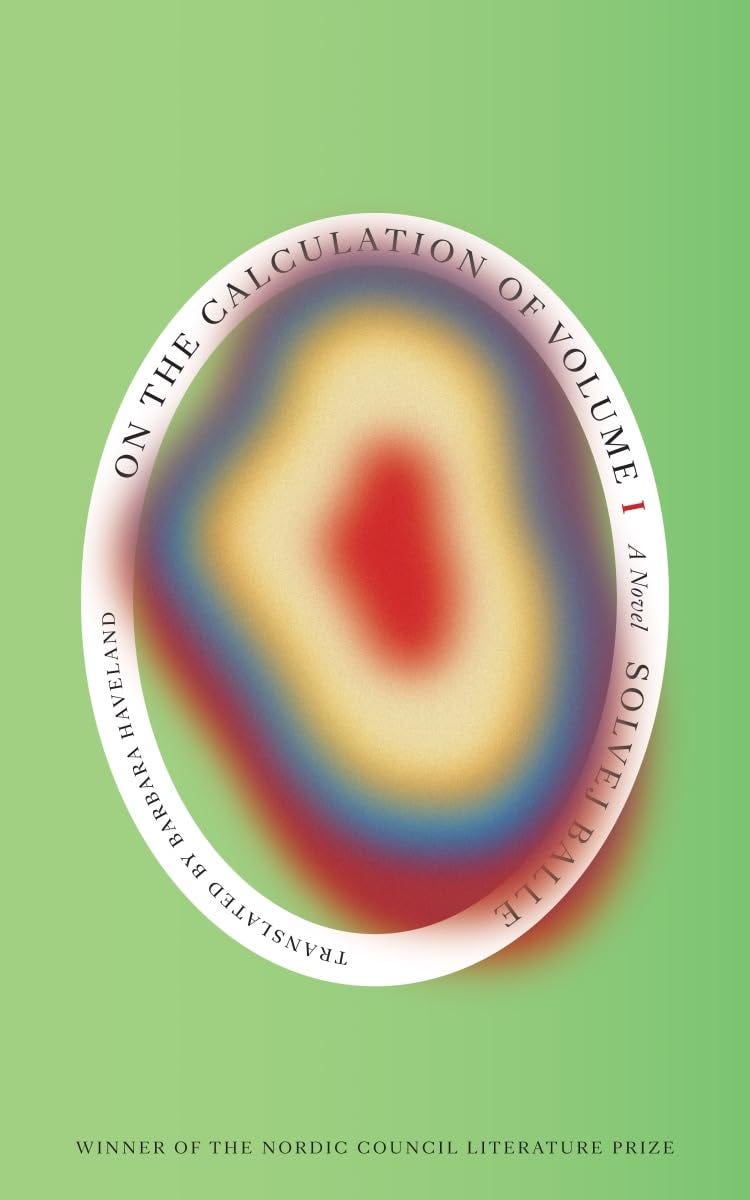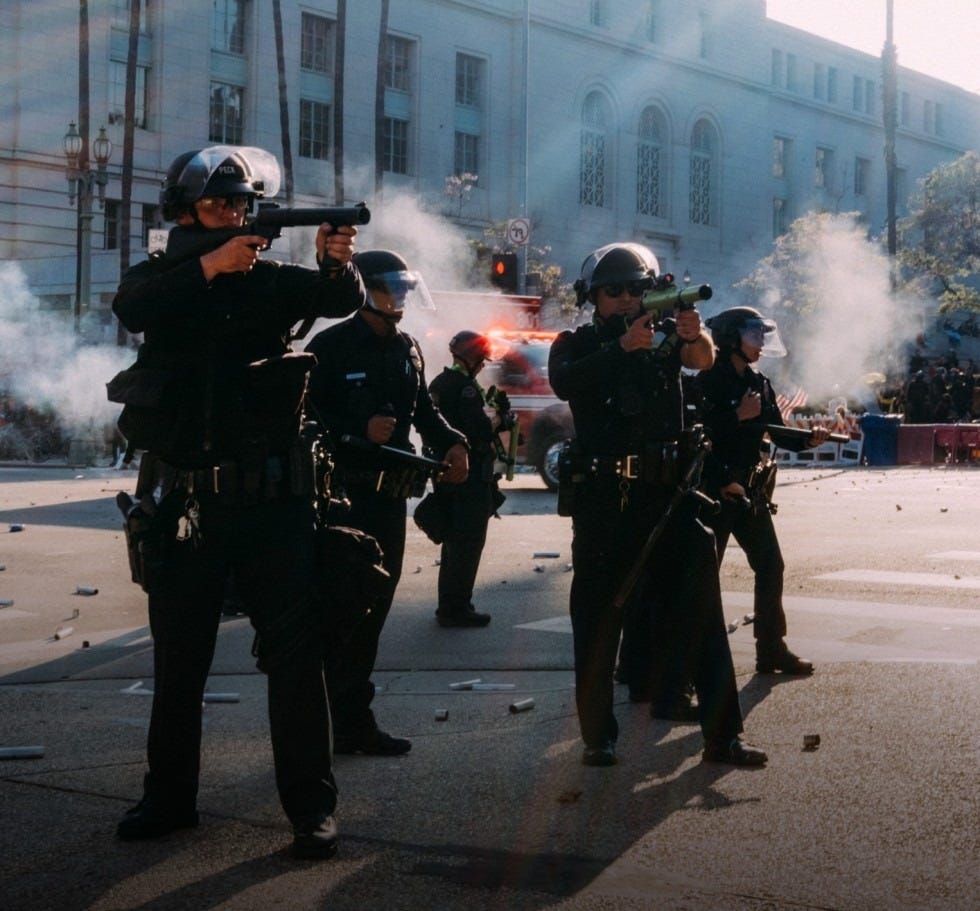
Good afternoon!
I have two time/mind-bending translated fiction novels to share with you this week—Time Shelter by Georgi Gospodinov, translated from Bulgarian by Angela Rodel, and On the Calculation of Volume (Book I) by Solvej Balle, translated from Danish by Barbara J. Haveland.
Both books explore the concept of time à la Borges/Kafka. Since I love Borgesian literary puzzles, I unsurprisingly enjoyed both novels and would recommend them to the right reader.
Let’s get into it.
read📖→
Time Shelter by Georgi Gospodinov, translated from Bulgarian by Angela Rodel
Time Shelter is a speculative fiction novel about a “clinic for the past” that allows patients to live as they would in a past decade.
Overview: Time Shelter opens with our unnamed narrator meeting an eccentric man, Gaustine, on the streets of Vienna. The narrator describes Gaustine as a “vagrant in time”—he lives in the past in the present by reading old news and exclusively wearing vintage clothing.
The narrator follows Gaustine to Zurich, where he learns that Gaustine has opened a clinic that offers a promising treatment for Alzheimer’s patients. Forget-me-not flowers surround the apricot-colored “clinic for the past.” Inside, each floor recreates a decade in nearly perfect detail, allowing patients to seek solace in the past when they felt most secure. For those suffering with dementia, “the present is a foreign country, while the past is their homeland.”
The narrator asks Gaustine, “Why here exactly, why Switzerland?” Gaustine replies that it’s because he loves Thomas Mann’s The Magic Mountain. The narrator thinks there is more to this choice: “Switzerland is the ideal country due to its ‘time degree zero.’ A country without time can most easily be inhabited by all possible eras.”
Gaustine hopes that his time shelters will proliferate one day. As he explains, “when this business really takes off . . . we’ll create these clinics or sanatoriums in various countries. The past is also a local thing. There’ll be houses from various years everywhere, little neighborhoods, one day we’ll even have small cities, maybe even a whole country.” He expects that, eventually, “the majority of people will start returning to the past of their own accord, they’ll start ‘losing’ their memories willingly.” Gaustine opines:
The time is coming when more and more people will want to hide in the cave of the past, to turn back. And not for happy reasons, by the way. We need to be ready with the bomb shelter of the past. Call it the time shelter if you will.
Convinced, our narrator begins working as Gaustine’s assistant, “a collector of the past.” He acquires trinkets, like typewriters, 1940s shirt buttons, wallpaper, lamp shades, and cigarette brands, to furnish the new clinic.
As Gaustine predicted, it is a success, and even healthy individuals begin to seek out Gaustine’s “time shelters.” Some don’t even want to go to the past. A man from a communist country asks the clinic to recreate life in the United States, a dream he has always had. The concept of temporal safe spaces spreads across Europe. Eventually, countries hold referendums on which decade each country should emulate. France and Spain choose the 1980s, and Sweden picks the 1970s.
Opinion: Time Shelter is a brilliant thought experiment. Gospinov deftly plays with our collective relationship with nostalgia and the misremembered past. It’s an elegant means to explore the legacy of 20th-century Europe, while also serving as a sharp indictment of nationalism (Gospodinov wrote the novel in between Brexit and Russia’s invasion of Ukraine).
Why do we always seem to be collectively looking to the past, believing we are missing out on better days? As Gospinov writes, “happiness doesn’t make it into the history textbooks,” and most importantly, “You can’t summon legions under the banner of happiness.” In contrast, unhappiness is an “inexhaustible resource” that nations and homelands can excavate forever.
As Gospinov points out in Time Shelter, we routinely misremember the past. At one point, the narrator discusses groups wanting to bring back the socialist days in Bulgaria and notes that romanticizing this history requires a lot of forgetting: “Forget those who were surveilled, lied to, separated, banned, humiliated . . . . Forgetting takes a lot of work. You have to constantly remember that you are supposed to forget something.”
More broadly, Time Shelter is a nuanced portrait of how we perceive the past. Gospinov writes that myths and religious texts condemn those who look back—Lot’s wife turned into a pillar of salt when she looked back, and Orpheus looked back at Eurydice as he was leaving the underworld, losing her forever.
But is the past what is behind us? Gospinov writes about the Aymara tribe in the Andes (a real tribe) who believe that the future is behind you. The future “comes up from behind your back, surprising and unforeseeable, while the past is always before your eyes, that which has already happened.” Could this be a better way of explaining our relationship with the past? We live in it, remember it, and experience it, while the future is unknowable. “What would the parable of Lot’s wife sound like in this case?”
As always, strengths are weaknesses, and Gospodinov’s clever conceit becomes more heavy-handed as the novel unfolds. The first part of the book focuses heavily on the individual stories of various patients at the time shelter, while the second part centers on EU referendums. The third part follows the narrator’s pseudo-philosophical notes as his mind starts to unravel. It becomes difficult to miss the political aspect of Time Shelter’s thought experiment.
The novel also becomes less focused as we delve deeper into the narrator’s layered philosophical musings, but I think that’s Gospodinov’s intent here. It’s less of a cohesive novel with a singular plot and more of a collection of short stories.
Overall: Time Shelter is an interesting, thought-provoking work of speculative literary fiction. I would recommend it to someone who likes Kafka, Borges, or other speculative fiction writers.
Rating: 3.9/5
Genre: Literary Fiction, Science Fiction, Speculative Fiction
Notable prizes/book clubs/lists: Winner of the International Booker Prize (2023)
Page count: 304 pages
Audio: 10 hours 19 minutes
Movie/TV pairings: Midnight in Paris
On the Calculation of Volume (Book I) by Solvej Balle, translated from Danish by Barbara J. Haveland
On the Calculation of Volume (Book I) is the first book in a planned seven-book series by Solvej Balle about a woman stuck in a time loop.
Overview: On the Calculation of Volume centers on Tara Selter, a rare-book dealer living in Clairon-sous-Bois in northern France with her husband, Thomas. She is doomed to repeat November 18 endlessly. The rules of her world are unclear. Some items she acquires will stay in place through the next version of November 18, but no one else appears to be stuck in time. The chapters are divided by the version of each day, and Tara narrates in the first person.
The novel opens with Tara experiencing November 18 for the 121st time. On her 121st version of November 18, Tara begins to write about her experience. “Because time has fallen apart . . . . Because the paper remembers. And there may be healing in sentences.”
The first time she experienced November 18, she woke up in a hotel room in Paris on a grey rainy morning. She had been in Bordeaux on November 17 at a book auction and then traveled to Paris. She spent November 18 visiting a few bookshops and then had dinner at the home of her friend, Philip, a collector specializing in coins from Imperial Rome, and his girlfriend, Marie.
Tara initially spent her days returning to her home from Paris to be with her husband. She has repeatedly confided in him, and they have together tried “to find the fault in time.” After numerous unsuccessful attempts, she now spends her days alone, becoming a ghost in her own life.
Tara writes that she and her husband both express their love through quality time: “We are not one of those couples that has to have time apart, to miss and rediscover one another . . . . For us it has always been about the days together, day after day, night after night, again and again.” But what happens now that they are “living in two different times”? There is little physical distance between them (she can hear his footsteps around the house), but the two have drifted apart. “It is the loss that staggers me,” she writes.
Balle follows Tara as she navigates this time loop.
Opinion: On the Calculation of Volume is essentially a literary fiction take on Groundhog Day. There are countless permutations of time loops in literature and film. We seem to be endlessly wowed by them, as I was here.
The reason why time loops work so well is that they are essentially meditations on how we fill our days. Most of our time is spent doing relatively mundane tasks and listening to the same sounds. Balle opens the novel with those quotidian details and sounds:
There’s the gush of water through the pipes as [Thomas] fills the kettle. The sound of metal on metal as he sets the kettle on the stove and the very faint click when he turns on the gas. Then there’s the pause until the water comes to the boil. There’s the rustle of tea leaves and paper . . .
Balle does a good job of describing similar details over and over again in different ways. Although the writing style impressed me, this book is definitely slow-moving and can be a little repetitive.
While On the Calculation of Volume is a meditation on what it means to exist, it also appears to be a vehicle for exploring the mental isolation one experiences for other reasons, like a depressive episode. How often do we feel disconnected from our loved ones, even if we are not physically separated from them? Balle delves into how we spend our time and our need to share our lives with others.
Overall: I enjoyed the first book of On the Calculation of Volume and am interested to see where this septology goes. Like with Time Shelter, I’d recommend it to someone who likes literary puzzles or speculative fiction, even if this first installment is relatively plotless.
Rating: 3.7/5
Genre: Literary Fiction, Speculative Fiction
Notable prizes/book clubs/lists: Shortlisted for the International Booker Prize (2025), A New Yorker Best Book of 2024, a Washington Post Notable Book of 2024, longlisted for the National Book Award for Translated Literature
Page count: 160 pages
Audio: 4 hours 40 minutes
Movie/TV pairings: Groundhog Day, Russian Doll, Palm Springs
consumed 🎬🎧🗞️→
In book news, The Safekeep just won the Women’s Prize for Fiction. I loved this novel and am excited to see it get more recognition!
This FT article by Viet Thanh Nguyen (author of The Sympathizer) on the protests in Los Angeles.
“Is money ruining television?” asks one writer in The Atlantic. While extreme wealth isn’t new to the screen, I have to agree that most of the shows I’ve been watching seem to be about the uber wealthy.
cooked 🍳→











I’ve been considering giving On the Calculation of Volume a read after learning of it through the Booker.. and seeing the very cool cover! thank you for the rec :) I may have to give it a go!
Time Shelter sounds fascinating! Going to add it to our TBRs :)